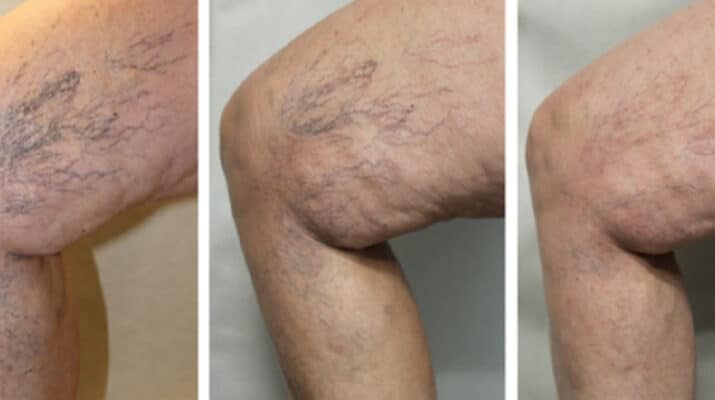By Deborah Jeanne Sergeant

Small, squiggly and red, blue or purple in color, spider veins bother some women because of how the veins look on their legs and feet.
But they are not only cosmetic.
Spider veins can also cause pain and they may be associated with underlying varicose veins, which can cause aching, throbbing and swelling.
They often appear on the legs and face but can develop anywhere on the body.
Common risk factors for spider veins include family history, female gender, pregnancy, age, hormones and history of varicose veins. Healthcare providers offer a few different means to get rid of spider veins.
Brittany Montross, clinical assistant professor at Jacobs School of Medicine and Biomedical Sciences at University at Buffalo and vascular surgeon at UBMD Surgery, uses sclerotherapy to treat patients with spider veins, “the most tried and true treatment.”
Providers evaluate the larger, superficial veins’ function to ensure they do not require treating first.
The practitioner injects a small amount of liquid into spider veins that cause a scar that closes the vein.
“While some patients can experience staining at the site of the injection, these typically disappear within three to six months,” Montross said. “Some also have development of new, small spider veins at or near the site of the previous veins. In general, once a vein is treated it does not open back up.”
Patients may require two to four treatments over several months to achieve the best results for large areas. The areas may itch a little for a few days and patients should avoid direct sunlight for two weeks, but most patients can go back to normal activities right away.
Laser treatments offer another option. Krystal Waters, registered nurse and esthetician at The Plastic Surgery Group of Rochester in Rochester, uses this as her primary treatment.
“I use one lens to heat up the area and with the other lens, I trace along the spider vein to get it to coagulate, reabsorb into the body and disappear,” she said.
The procedure can take up to two hours for a client with numerous spider veins. Treating just one small area takes only a few minutes. If clients continue with behaviors that contribute to spider veins, the veins will likely return.
Intense pulsed light therapy is another form of treatment. The high intensity, non-laser light heats and damages the walls of the veins until they disappear.
Jennifer Ellis, medical director of UR Medicine Vein Center, encourages patients to maintain a healthy weight, as carrying extra weight increases risk of spider veins. Sedentary lifestyle, smoking, or standing or sitting too much all contribute.
“If you’re very sedentary, take frequent breaks to elevate your legs or get up and walk around,” Ellis said. “That can be effective. Another option is compression stockings. They are knee high socks that help support your legs.”
She recommends a balanced diet low in cholesterol, salt and processed foods to promote circulatory health. Ellis also makes sure that patients don’t have underlying venous issues.
While for some women, spider veins can become painful. She wants more people to seek treatments “instead of waiting until they experience irreversible effects on their legs,” she said.

